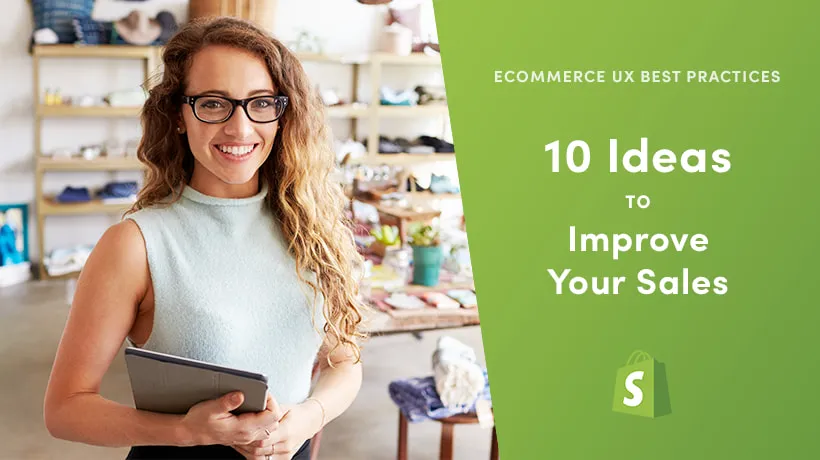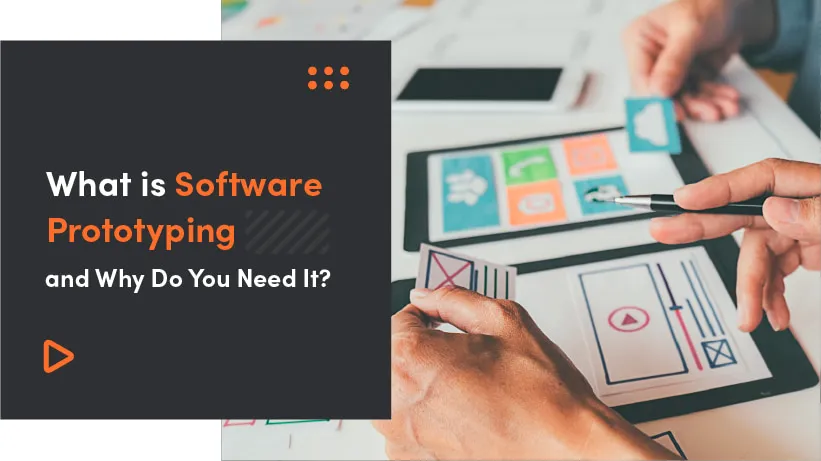Do you ever get a good feeling when you are browsing an online store? It can be a feeling of comfort thanks to the amazing user experience or a feeling that somebody cares when you are offered free shipping or gift wrapping.
In the eCommerce world, your website design is your online ID. It helps you stand out and should reflect your brand.
The main challenge of eCommerce websites is to convert visitors into buyers and make them come back for more. This is exactly why you should never underestimate the power of a good UX when building your website.
Here are 10 eCommerce best practices that will help you improve your sales.
How to improve your sales
1. Intuitive navigation
Having a beautiful website is pointless if it is hard to navigate. Endless scrolling, complex navigation, hidden menus all negatively influence user experience and therefore complete purchases. According to Hick’s Law, the more choices the user has, the more time it will take them to complete an action. If your customers will notice they are wasting time on unnecessary operations they will leave you for your competitors.
To avoid that, you should take these key features into account:
- descriptive menu labels - avoid generic words like “products” or “what we do”. They not only have an impact on the user experience but are also bad for SEO
- simplified menu navigation - fewer items in the menu will make it easier for the customers to find exactly what they are looking for. This will boost your SEO since simpler menus will allow your homepage to pass its authority to less authoritative pages
- internal links - remember to make it easy for people to move from one page to another; internal links and clear calls to action will engage users into your website. As your customers wander around the shop, make sure they do not get lost. They have to know where they are and how to get back, breadcrumbs are great at providing such guideline.
Under the category of intuitive navigation, we also have to mention mobile-friendliness. Over 1.2 billion people use their smartphones to browse the internet. For some users, it’s the only way to browser the web.
This means your website should work on mobile devices as good as in standard browsers. Here, it is important to make use of gestures like pinching, swiping, etc. When creating a mobile version of your website take into consideration drop-down menus and pop-ups, which might be limited by the smaller screen.
2. Hustle-free checkout
Make checkout short. If your checkout has 15 required form fields, a lot of users might just leave and never come back. How to spot and get rid of unnecessary fields? First of all, do not force your customers to register when making a purchase. Not all of them want to create an account or be on your mailing list, allow them to make that decision on their own. If they want to register, however, make the experience as smooth as possible. Ask them to fill only the fields that are important to you like e-mail address, phone number and password.
A perfect checkout has:
- auto-format fields for inputs like credit card numbers (automatic spaces between numbers)
- localized input masks for phone numbers, area codes etc
- live inline form validation
Remember to *clearly mark required and optional fields** for a speedy checkout. You can also consider allowing to sign in using an existing Google or Facebook account.
Be open about the shipping costs in the very first steps of the checkout. You can also add the shipping cost to the product pages to avoid unpleasant surprises.
Another important part of checkout is security. You need to switch from HTTP to HTTPS since Google marks websites with SSL certificate with a ‘secure’ label and a green padlock.
Security badges demonstrate your authority and reassure your customers that their sensitive data is safe.
3. Attractive images
Images are what the internet is made of. We rely on our visual senses when we navigate web pages. Customers admit that pictures are more important than the product description and reviews. It is important that you choose the most attractive and appealing images. Try not rely on stock images, take our own, unique ones and make sure they are high quality.
Include several photos from different angles to showcase important details of the articles. You can also try adding in-scale photos to help your customers assess the product’s size. Another neat feature to consider is adding a zoom option or a 360-degree view of the product.
More and more stores decide to use video as a way to present their product like footage of models wearing their clothes. This is common practice on a popular shop ASOS. In some cases, they also make use of AR where the model can present the clothes right before your eyes.

Here is another amazing example of an unconventional product display where customers were able to virtually place items in a bag of their choice - iPhone, iPad, water bottle - in order to determine what would actually fit in it.

4. Make finding products simple
Do research to find out which categories perform well and are the most important to people. Create logical product categories and subcategories, so your customers will know exactly where to look for what they need.
Implementing a search bar on the website will make finding products even easier. This way you will also know what are the most-frequently searched products or what to add to your catalogue. A good search bar is a search bar that allows users to look for items by their product code or even scan barcodes.
5. Personalized user experience (breadcrumbs, filters, viewing history)
On modern websites, breadcrumbs show the path from a website’s main page to the current page. They allow users to go back to the landing page with a single click. They are also proven to reduce bounce rate. Breadcrumbs make it easy to go back to main product categories and navigate through large catalogues improving user experience.
Filters also have a positive impact on the user-friendliness. They help visitors find exactly what they are looking for in a matter of seconds. Most popular filters include colour, product type, size as well as the ability to sort products by price or what is new.
What personalizes the user experience is viewing history. This can include products similar to those previously viewed, by the same brand or items that go well with the purchase.
6. Optimize the assets
Nothing makes visitors leave faster than a slow-loading page. A slow website means a lower conversion rate. An Adobe study showed that 39% of people will stop using a website if the images take too long to load. Improper sizing and poor compression of the images can have a huge impact on the speed of your website.
You can diagnose the issues with your website using Lighthouse or contact Selleo.
7. Uncomplicated layout
The homepage is here to engage a customer and build a relationship with them. However, the product page is what turns a visitor into a paying customer. Product pages should be created in such a way to educate the client about your product, intrigue them and make them click the “buy now” button.
Here are the things to focus on while building an amazing product page:
- images - as mentioned above, you should present the product from different angles, use videos, 360-degree view, zoom etc. It is always a good idea to show the product being used, so your customers can visualise themselves using it
- product information - explain everything that you want customers to know about your product. Highlight the unique features, dimensions, compare it to other products. Inform if it is available in different colours or sizes. Describe the products like a person, not a machine. Amazon is known for describing products like you are talking to your friends or family. They like to tell the customers how they can use the product and how convenient it is
It is also worth considering how groups of products are loaded on the website. You can choose to paginate them, use infinite scrolling or a load more button.
Pagination is most frequently used by eCommerce stores with a large catalogue of products in order not to display all of them at once. Providing smaller chunks of content lets customers focus on the most important parts on the page.
If implemented well, infinite scrolling provides a smooth and seamless experience. In this technique, content is continuously loaded as the user scrolls down the page. Infinite scrolling is used by giants like Facebook or Twitter. It works well with a flat content structure but fails at goal-oriented tasks. For eCommerce websites, it might be more difficult to find the right products.
The last technique is adding a “Load more” button and let the customer decide whether or not they want to see more products. It gives them a sense of control while protecting from getting lost.
8. Vivid yet minimal design
The call to action button should be designed to attract customers and convince them to click it. Do not be afraid to make it big or use bright colours. The most important information should be eye-catching.
On the other hand, minimal website design has been a rising trend for the last 7 years. A minimal UX is defined as a design with the right number of elements that keep the website functional and nice looking. Try limiting colours used to three at most. Use your brand colours with their varying shades to remain consistent.
It is also worth to consider the psychology behind colours: blue is calming while green often signals eco-friendliness. Yellow can be hard to read and indicate caution. Keep a high contrast between the text and the background so people can read content easily. What is more, a simple design is the most useful in eCommerce since visitor’s attention will be directed towards pictures.
9. Allow user-generated content
In the world of eCommerce, it is not only your content that counts. Research conducted by marketing companies shows that consumers like seeing photos taken by other customers. You can also encourage clients to leave reviews, share their experience with your products on social media or external reviewing websites.
According to Brightlocal 91% of consumers aged 18-34 trust online reviews as much as personal recommendations. Leveraging customer reviews will build trust and loyalty. Worth considering is allowing reviews to be posted without any moderation - this will show you are confident and honest.
Another example of user-generated content is list creation. Many customers are not 100% confident in their purchases from the beginning. It is nice to be able to save them for later in the form of a shareable wishlist or to simply visit when the right time comes.
Going further, you can build a social platform out of your website, where customers and other brands can publish news and gain followers.
10. Frequently Asked Questions
If a customers is unsure whether to buy from you they may leave your website. A FAQ page is a way to convince visitors that they in fact want to become your customer. As the name suggests, the page is there to answer the most popular questions minimizing the purchasing anxiety. A great FAQ page is written in a positive manner and is full of helpful tips. It can even include screenshots and images to make everything easier to understand.
A solid FAQ page can also positively impact you SEO, especially the local one. It gives you the opportunity to optimize your answers and questions for conversions and distribute keywords organically, without compromising user experience.
Summary
An amazing user experience is crucial for your online store’s performance. It is what attracts visitors and converts them into loyal customers. The basics will not cut it anymore, you have to implement eCommerce UX best practices and offer something unique to make the customers feel special.
No matter which strategy you choose, remember to stay connected to your customers and personalize their experience.
If you want to build your own eCommerce website and improve your sales, schedule a consultation with our experts to bring your idea to life!
Try our developers.
Free for 2 weeks.
No risk. Just results. Get a feel for our process, speed, and quality — work with our developers for a trial sprint and see why global companies choose Selleo.





